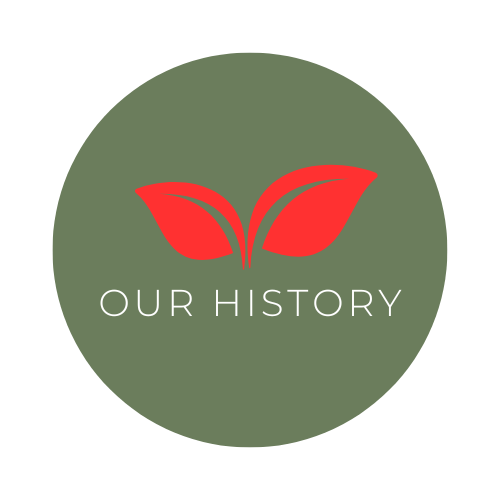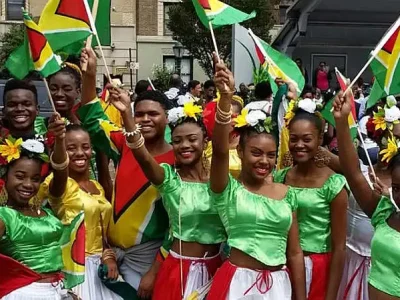The history of Guyana is one of colonial rule, the struggle for independence, and the development of a unique cultural identity. This fascinating South American nation was once a Dutch colony, then a British territory, and finally gained independence in 1966.
What are the people of Guyana like?
Indo-Guyanese, or South Asian descendants, comprise the largest ethnic group in Guyana, accounting for approximately 40% of the population. Their forefathers primarily came as indentured labourers from India, replacing Africans in plantation work. Presently, Indo-Guyanese continue to be heavily involved in plantation agriculture and are often independent farmers and landowners. Additionally, they have thrived in trade and maintain a strong presence in various professions.
Afro-Guyanese, or individuals with African ancestry, constitute roughly 30% of the population. Following emancipation in 1838, they left plantations to become independent farmers or urban dwellers. Those with mixed heritage comprise about 20% of the population, with people of mixed African and European ancestry being the most prevalent.

Indigenous peoples represent about 10% of the population and can be classified into coastal and interior groups. Coastal groups include the Warao, Arawak, and Carib peoples, while interior groups consist of the Wapisiana (Wapishana), Arekuna, Macusí (Macushí), and several others inhabiting forest regions. The Rupununi Savanna is home to significant populations of Macusí and Wapisiana.
Additionally, considerable numbers of Indians reside in the far west along the borders with Venezuela and Brazil. Although some have integrated with Afro-Guyanese and Indo-Guyanese communities along the coastlines, many continue living in Guyana’s interior on informal village lands. Large-scale concessions granted to logging and gold mining companies since the late 20th century damaged indigenous territories and polluted rivers, compelling some to migrate to Venezuela and Brazil.
English is the predominant official language, while a creole patois is spoken nationwide. Among the older Indo-Guyanese population, Hindi and Urdu can be heard sporadically. Christianity, particularly Anglican and Roman Catholic denominations, and Hinduism are the primary religions practised. Protestant Christianity gained traction during the 20th century, predominantly in Georgetown. Additionally, there is a significant Muslim minority, primarily of South Asian origin. Some Indian communities still observe Indigenous religious practices.
When was Guyana colonised?
Arrival of Europeans
The Dutch were the first Europeans to arrive in what is now known as Guyana in the late 16th century. They established trading posts along the coast and established relationships with the indigenous inhabitants, the Arawaks. The Dutch initially focused their efforts on trading tobacco but soon shifted their attention to sugar production as the demand for this valuable commodity grew in Europe.
Throughout the 17th and 18th centuries, the Dutch continued to expand their presence in Guyana, establishing more colonies and developing a plantation-based economy. The labour force for these plantations was primarily made up of enslaved Africans, who were brought to the region in large numbers. The Dutch West India Company controlled the administration of the colonies, and the Dutch Reformed Church played a significant role in the social and cultural life of the settlers.
British colonisation
The British began to take an interest in Guyana in the late 18th century, and in 1796, they occupied the Dutch colonies. After a brief return to Dutch control following the Treaty of Amiens in 1802, the British reasserted their dominance in 1803. The Dutch formally ceded control of their colonies in Guyana to the British in 1814, and the British officially merged them into a single colony called British Guiana in 1831. This colony included the Essequibo region, which nearby Venezuela claims belongs to them.
Slavery and its abolition
The slave trade was a critical aspect of the colonial economy in Guyana. Enslaved Africans were brought to the colonies to work on the sugar plantations, which were the primary source of wealth and economic power for the European colonisers. The brutal conditions faced by the enslaved people led to numerous rebellions and uprisings as they fought for their freedom and dignity.
The movement to abolish slavery gained momentum in the early 19th century, and the British government passed the Slavery Abolition Act in 1833. This act led to the end of slavery in British Guiana in 1834, with full emancipation granted in 1838. The freed Africans, however, continued to face significant challenges, including a lack of access to land and resources and discrimination from the colonial authorities.
Indentured labour and immigration
Arrival of indentured labourers
Following the abolition of slavery, the plantation owners in Guyana faced a labour shortage. They began to import indentured labourers from India, China, and other countries to address this issue. These labourers were brought to Guyana under contracts that bound them to work for a set period, usually five years. They were often subjected to harsh working conditions and had limited rights and freedoms.
Impact of immigration on Guyanese society
The influx of indentured labourers from diverse origins had a significant impact on the cultural and social fabric of Guyana. The Indian community, in particular, grew in size and influence over time, and their traditions, language, and religion became an integral part of the Guyanese identity. This immigration also laid the foundation for the multi-ethnic society that exists in Guyana today.
Political developments and the road to independence
Early political movements
The late 19th and early 20th centuries saw the emergence of political movements and organisations in Guyana. These groups were primarily focused on advocating for the rights and interests of the various ethnic communities in the country. Some of the key players in this period included the British Guiana East Indian Association, the British Guiana Labor Union, and the Manpower Citizens’ Association.
Formation of political parties
The 1950s witnessed a significant shift in Guyanese politics with the formation of modern political parties. The People’s Progressive Party (PPP) was founded in 1950 by Cheddi Jagan and Forbes Burnham, two leaders who would go on to play crucial roles in Guyana’s path to independence. The PPP advocated for self-government and social reform and won the first general election held under universal adult suffrage in 1953.
Constitutional reforms and the path to independence
Following the election of the PPP, the British government suspended the constitution and imposed direct rule in Guyana, fearing a communist takeover. This intervention led to a period of political instability and unrest, with the PPP being divided into two factions led by Jagan and Burnham. In response to the political tension and growing nationalist sentiment, the British government introduced a series of constitutional reforms throughout the 1950s and 1960s, culminating in the granting of independence to Guyana on 26 May 1966.
Post-independence Guyana

The early years of independent Guyana were marked by political instability and ethnic tensions between the Afro-Guyanese and Indo-Guyanese communities. The People’s National Congress (PNC), led by Forbes Burnham, formed a coalition government with a smaller conservative party and took the country into independence. The PNC gained full power in the 1968 general election amidst allegations of electoral fraud.
In 1970, Guyana was declared a cooperative republic within the Commonwealth, with a president elected by the National Assembly. Burnham pursued socialist policies, seeking to reorder the government and aligning himself with Soviet-bloc countries for support. His rule was marred by widespread fraud in the 1980 elections, economic downturn, and charges of involvement in the assassinations of several prominent figures.
Transition to democracy and economic reforms
In the late 1980s, Prime Minister Hugh Desmond Hoyte took over leadership from Burnham and gradually shifted away from his predecessor’s ideology. Hoyte’s administration focused on liberalising the economy and granting more rights to the Guyanese people. In 1992, the PPP triumphed in the first free and fair elections held in Guyana since independence, and Cheddi Jagan became president, advocating for democratisation and economic reforms.
The history of Guyana from colonisation to independence is a tale of struggle, resilience, and cultural evolution. From its early days as a Dutch trading post to its eventual emergence as an independent nation, Guyana has experienced significant challenges and transformations. Today, this multi-ethnic South American country continues to navigate its unique path towards a brighter and more inclusive future.





